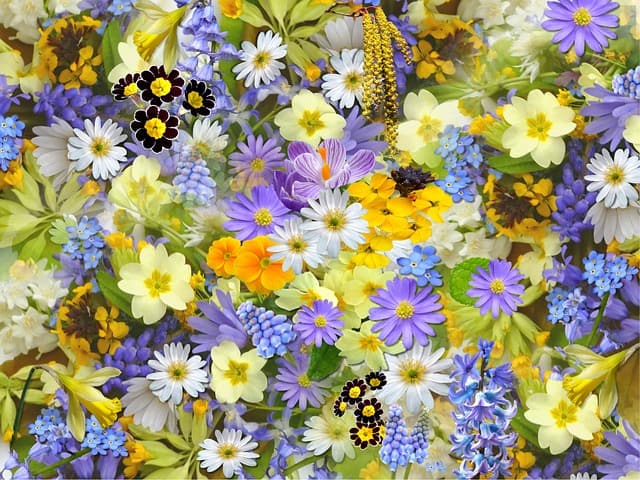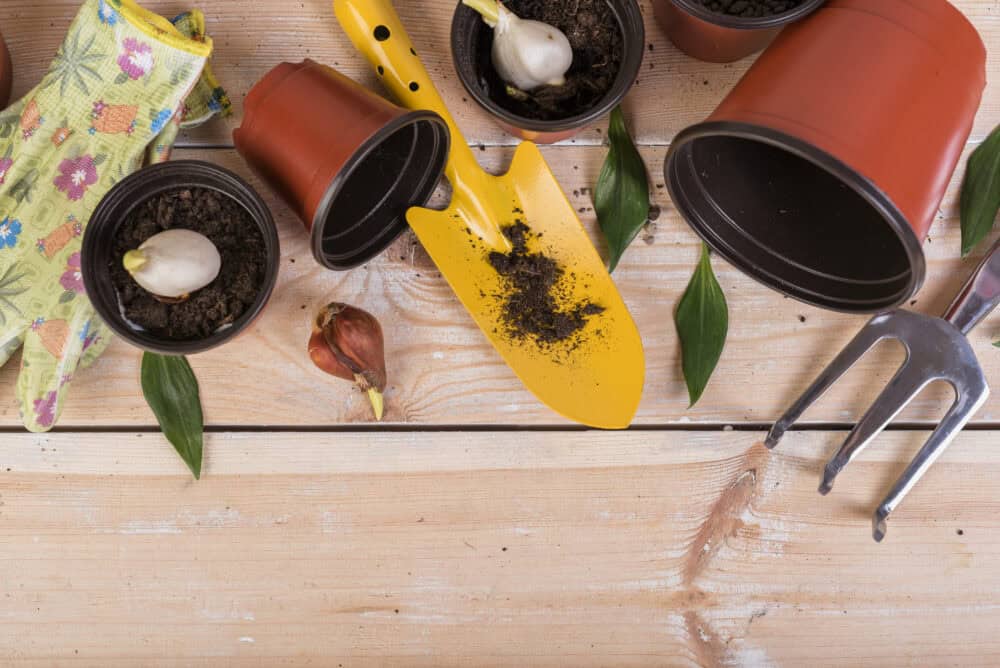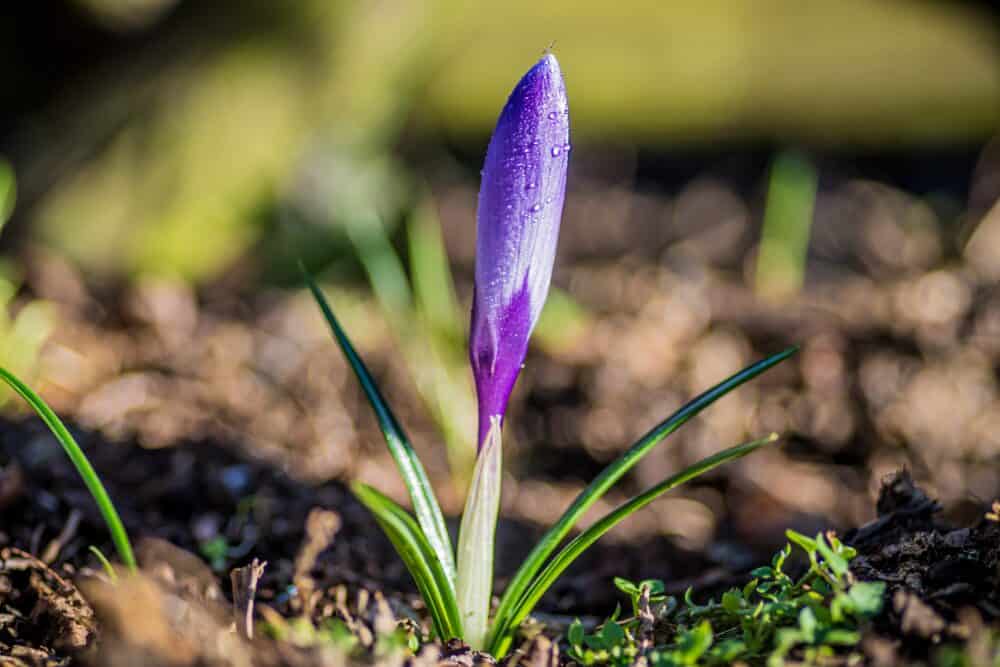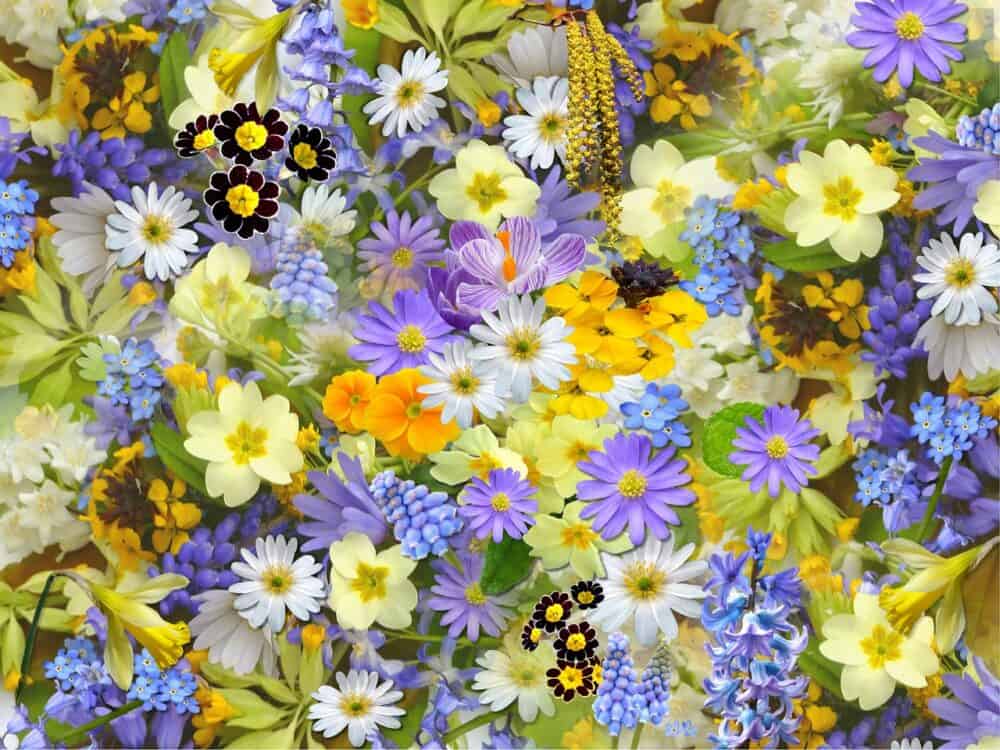
Table of Contents
Autumn is the perfect time to start planning your spring garden! As the days grow shorter and the cool breeze sets in, it might seem like garden season is ending. By planting bulbs now, you’re setting the stage for an explosion of color come spring. Here are some of the best spring-flowering bulbs to plant right now, along with a few general rule of thumb tips for best results to make sure they bloom beautifully when the frost thaws.
Why Plant Bulbs in the Autumn?

Planting bulbs in the Autumn is a time-tested practice that offers numerous benefits for any garden enthusiast. By preparing your garden during dry spells in advance, you not only ensure a vibrant and colorful display come late spring but also promote healthier plants that are better equipped to thrive. The cold temperatures, first frost and natural moisture of Autumn create an ideal environment for your favorite bulbs development, leading to more robust blooms when the warmer months arrive the following Spring. Early fall planting is also the best time as it will save you time and effort during the busier spring season, allowing you to enjoy the beauty of your garden next year without the rush.
Bulbs to Plant Now for Spring Color



Daffodils (Narcissus)
Cheerful, bright yellow daffodils are a spring staple! These hardy flowers are easy to grow, even for beginners. Daffodils come in a variety of shapes, sizes, and colors—ranging from classic yellow to whites and even pinkish hues. They’re also deer- and rabbit-resistant, making them ideal if you live in areas where critters might take a liking to your garden.
Planting Tip: Place your bulbs about 6 inches deep and 4 inches apart, with the pointy end facing up.
Tulips
Tulips are the quintessential spring flower, offering a burst of vivid colors that instantly lift your spirits. You can find tulips in nearly every shade imaginable, from bold reds and yellows to soft pastels. They look stunning planted in clusters, especially when you mix different varieties for a more dynamic display.
Planting Tip: Plant tulip bulbs about 6-8 inches deep in well-drained soil, spaced 4-6 inches apart. Consider layering with early, mid, and late bloomers for a long-lasting display.
Crocus
One of the first signs of spring, crocus bulbs will often push through the snow to bring you a pop of purple, yellow, or white. These petite, low-growing flowers are perfect for edging pathways or planting under trees. Crocuses look lovely in large drifts and provide a carpet of color in early spring.
Planting Tip: Crocus bulbs are small, so plant them about 3 inches deep and 3 inches apart. They thrive in full sun but will tolerate light shade.
Hyacinths
Looking for fragrance? Hyacinths, also Grape Hyacinths are a must! Their clusters of tiny, star-shaped flowers not only add a splash of color but also fill the air with a delightful scent. Hyacinths come in shades of blue, pink, purple, and white, making them a beautiful addition to any garden bed or container.
Planting Tip: Plant hyacinth bulbs 4-6 inches deep and 3-5 inches apart. Their blooms make for excellent cut flowers too!
Alliums
If you’re after something a little more unusual, alliums are a great choice. These tall, striking plants produce globe-shaped clusters of tiny flowers that create a stunning focal point in any garden. With shades ranging from deep purple to white, alliums bloom later in spring and continue to make a statement into early summer.
Planting Tip: Allium bulbs should be planted 6-8 inches deep and about 8-10 inches apart. They also make excellent companion plants as their scent helps deter pests.
Snowdrops (Galanthus)
Delicate and graceful, snowdrops are often the first flowers to bloom in late winter or very early spring. Their small, white, bell-shaped flowers bring a hint of freshness when everything else still seems asleep. These charming little flowers are perfect for naturalizing in woodland gardens or under deciduous trees.
Planting Tip: Plant snowdrop bulbs 3 inches deep and 3 inches apart. They do well in both full sun and partial shade.
Planting Tips for Success

Choose the Right Spot: Most early Spring garden bulbs prefer well-drained soil and a sunny location. Avoid planting in low-lying areas where water tends to pool, as bulbs without good drainage can rot in soggy conditions.
Don’t Skip Fertilizing: When planting bulbs, mix in a little bulb fertilizer, organic matter or bone meal into the soil to give them the nutrients they need to establish strong roots.
Plant in Groups: The best way to create natural looking flower beds is to plant Spring-blooming bulbs in groups of 10-15 rather than spacing them in a single row. Odd-number groupings tend to look the most visually appealing.
Mulch: After planting, cover the area with a layer of mulch to help retain moisture and protect the bulbs over winter.
Water Wisely: Water the different bulbs right after planting to help them settle in. Once the ground freezes, you don’t need to water again until spring.
Conclusion
Autumn’s temperate conditions provide a nurturing environment where bulbs can anchor themselves into the soil. This early investment in your landscape means that by the time spring arrives, you’ll witness a riot of color to greet you after winter’s dreariness. Planting your favorite spring bulbs now also reduces competition from winter weeds and minimizes stress on the plants due to extreme temperature fluctuations. Happy gardening.



